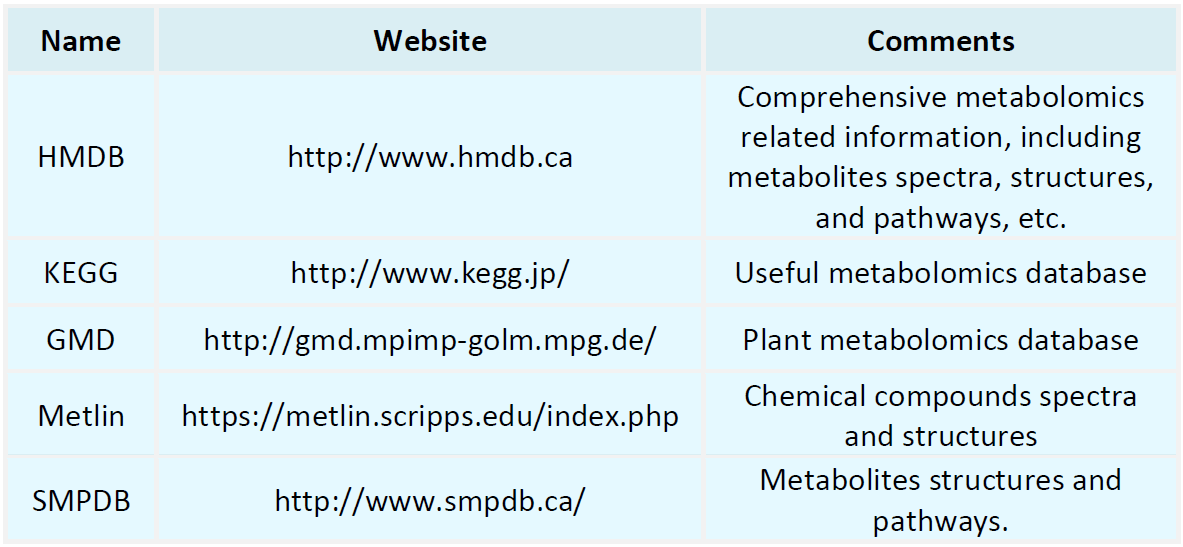Resources
Proteomics Databases

Metabolomics Databases

-
Tandem mass tag labeling is a widely applied chemical labeling technique in proteomics research. Its primary purpose is to allow researchers to simultaneously detect and compare the relative abundance of proteins from different samples within a single mass spectrometry analysis. This technique involves attaching isotopic tags to proteins or peptides, enabling the differentiation and quantification of identical molecules from different samples during mass spectrometry analysis. Tandem mass tag labeling......
-
• Qualitative Test of Amino Acid
The qualitative test of amino acid is an essential tool in biochemistry and molecular biology for identifying and analyzing the amino acid composition of proteins. Amino acids are the fundamental building blocks of proteins, and understanding their composition is crucial for elucidating the structure and function of proteins. In proteomics research, this test helps scientists determine the amino acid sequences of specific proteins or peptides. The technique is widely applicable across various fields, ......
-
• Histone Modification Detection
Comprehensive analysis of protein modifications represents a crucial method for investigating disease mechanisms and facilitating the development of novel therapeutics. This approach primarily employs mass spectrometry to perform extensive and precise assessments of protein modifications.
-
• Detection of Post-Translational Modifications in Protein Drugs
Post-Translational Modifications (PTMs) are chemical modifications that occur on proteins after their synthesis by mRNA translation, mediated by enzymatic activity on the protein's backbone or side chains. Types of PTMs: PTMs encompass various chemical modifications such as phosphorylation, acetylation, glycosylation, ubiquitination, and arginine methylation. These modifications alter the protein's chemical properties and charge distribution, consequently impacting protein structure and function. They can..
-
• Western Blot Detection of Protein Phosphorylation Levels
Western blotting is an immunoblotting technique extensively utilized for the detection of specific proteins within a sample. This method involves initially separating proteins via polyacrylamide gel electrophoresis (PAGE), followed by their transfer onto a membrane, and subsequent detection using specific antibodies. For assessing protein phosphorylation levels, specific antibodies targeting phosphorylated epitopes are employed. The following outlines the fundamental steps for using Western blotting to.....
-
• Protein Phosphorylation Modification 4D-DIA Label-Free Quantification Technique
Protein phosphorylation is a pivotal form of post-translational modification, essential for cellular signaling, cell cycle regulation, growth, differentiation, and apoptosis. Investigating protein phosphorylation is thus of immense scientific and clinical importance. Recently, the advent of 4D-DIA label-free quantification technology has introduced a novel approach to proteomics analysis. This method integrates ion mobility chromatography (IMC), tandem mass spectrometry (MS/MS), and data-independent........
-
• Protein Chemical Sequencing Method
Protein chemical sequencing is a pivotal biochemical technique used for elucidating the amino acid sequences of proteins. This method is essential for comprehending the architecture and functionality of proteins and is immensely valuable in drug discovery and disease diagnostics. Below, we present a detailed overview of the fundamental steps and applications of protein chemical sequencing.
-
• The Importance of Glycomic Analysis
Glycomics is a technique for investigating sugar metabolism in organisms by measuring and analyzing changes in glycan composition and concentration. This approach has extensive applications in biomedical research, food science, and biotechnology. Providing Fundamental Insights for Biochemical Research: Glycomics serves as a crucial tool in biochemical studies. Sugars are not only a major source of energy but also essential mediators in numerous biological processes. A comprehensive understanding of glycan..
-
• Translate the Amino Acid Sequence of the Peptide by Mass Spectrometry Analysis
Liquid Chromatography-Mass Spectrometry (LC-MS) is a widely used analytical technique for determining the amino acid sequences of peptides. By integrating liquid chromatography (LC) with mass spectrometry (MS), LC-MS enables comprehensive structural characterization of peptides with high sensitivity, accuracy, and resolution. Fundamental Principles of Liquid Chromatography-Mass Spectrometry: The principle of LC-MS involves two key stages: chromatographic separation followed by mass spectrometric detection.
-
• Amino Acid Sequence Feature Analysis
Amino acid sequences play a fundamental role in biological research, as they serve as the primary structural units of proteins. In bioinformatics—a field that integrates computational approaches with biological data—the analysis of amino acid sequence characteristics is a crucial task. Amino Acid Sequences: Amino acid sequences are synthesized during the translation of nucleic acids into proteins within animal cells. Each amino acid sequence encodes specific biological functions and holds significant.......
How to order?







